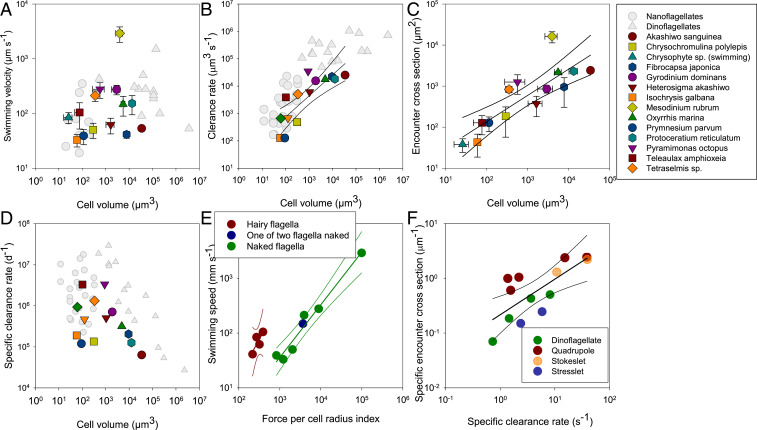Fig. 2.
Key traits of the investigated flagellate species. (A) Swimming velocity as a function of cell volume (R2 = 0.06; P = 0.4). (B) Potential clearance rate derived from flow fields as a function of cell volume (LogClearance = 1.33 + 0.77 × LogVolume; R2 = 0.68). (C) Encounter-cross section for U* = 50 μm s−1 as a function of cell volume (LogCross- section = 0.85 + 0.64 × LogVolume; R2 = 0.70). (D) Specific clearance rate as a function of cell volume. (E) Swimming speed as a function of the force per cell radius index (F/r) for species with naked (R2 = 0.97) and hairy (R2 = 0.69) flagella. F/r = L × n × f × A/r, where L is flagellum length, n is the number of active flagella, f is their beat frequency, A is the beat amplitude, and r is the cell radius. (F) Specific encounter cross-section against specific clearance rate: LogSpecific cross-section = −0.66 + 0.65 × LogSpecific clearance; R2 = 0.54) Error bars in A and C are SDs. Regression lines are shown with 95% confidence limits. Gray symbols in A, B, and D are literature values compiled by Kiørboe (27).

